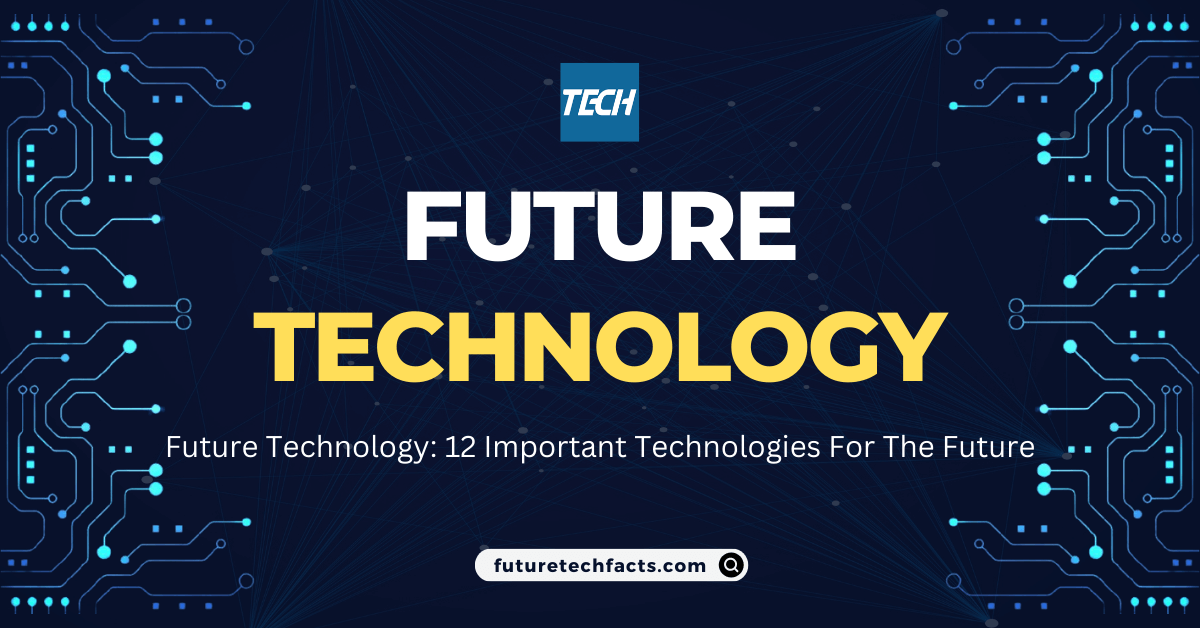In a world rapidly shaped by technological advancements, the future promises a landscape where innovation and creativity converge to redefine the way we live, work, and interact. This article explores the cutting-edge domains of future technology, showcasing the strides made in Artificial Intelligence, Virtual and Augmented Reality, Robotics, Biotechnology and Genetics, Space Technology, 3D Printing, Computing Technologies, Smart Devices, Data and Security, Energy Solutions, Networking Technologies, and Blockchain.
Table of Contents
Artificial Intelligence (AI)
Artificial Intelligence (AI) stands at the forefront of future technology, revolutionizing how machines learn and process information. Generative AI, a subset of AI, is unlocking unprecedented possibilities by enabling machines to create content, mimicking human creativity.
1. Artificial Intelligence and Machine Learning:
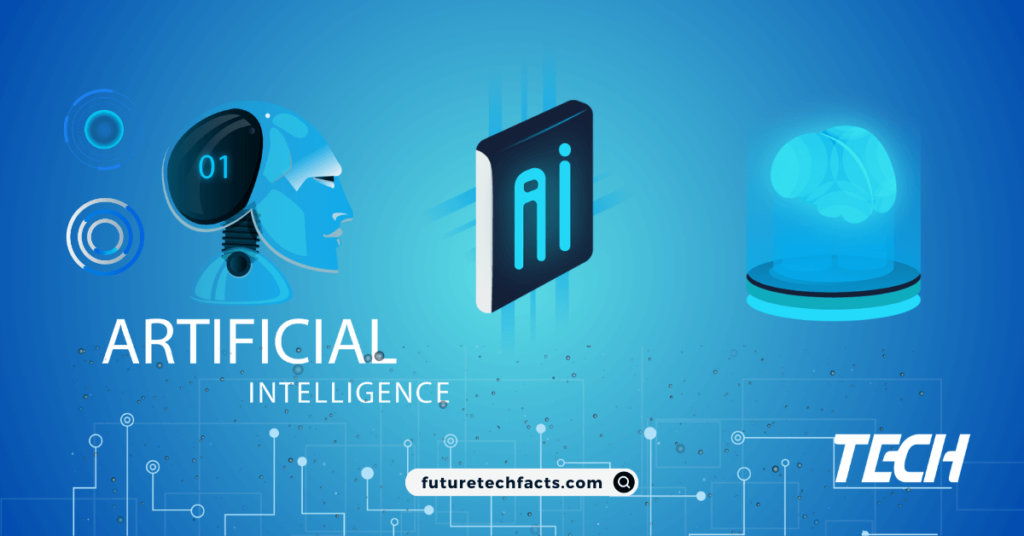
Artificial Intelligence:
Artificial Intelligence (AI) and Machine Learning (ML) have made a significant contribution to improving our world. These technologies have created the framework of Artificial Intelligence, which gives us the ability to think and make decisions independently.
Machine Learning:
Machine learning is an AI field that provides computer systems with the ability to learn from data and enable them to acquire new information and experiences. This contributes to the learning process by allowing for free change so that the system can learn from its mistakes and perform better.
Areas of Artificial Intelligence:
- Hygiene and Safety: Using Artificial Intelligence we can improve safety systems and help in hygiene research.
- Health Care: Machine learning can be used in medicine for disease prediction and treatment, providing better care to patients.
- Financial Services: The use of AI in banking and financial services can lead to better customer service, data security, and financial decisions.
- Education: Machine learning can help students create personalized education plans that consider their needs and quality.
- Industry and Manufacturing: Artificial intelligence and machine learning can improve productivity and performance across a variety of industries.
Recommended to Read: What Is ChatGPT Ai? You Really Need To Know!
2. The Rise of Generative AI:
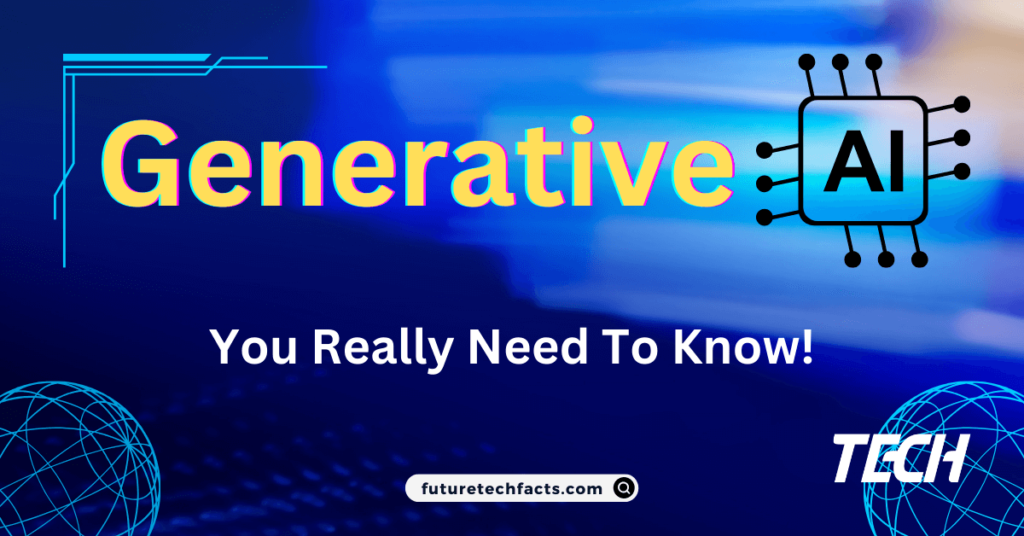
Generative AI is a branch that provides computer systems with the ability to independently create new data and content. Its main purpose is to provide the system with novelty in texture, state, or internal structure like human material. The technologies used for this are related to processes, such as Generative Adversarial Networks (GANs) and Recurrent Neural Networks (RNNs).
Types of Generative AI:
- Generative Adversarial Network (GAN): This is a type of generative AI that replaces two different networks – one that creates new data and one that compares it to the original data. Its purpose is to improve the texture so that the new data matches with the original data.
- Variational Autoencoder (VAE): This is another method in which the network learns how to represent data in a specified form, and can then use this specified form to create new data.
- Supervised Generative Adversarial Network (SGAN): This involves gravitation towards generated data of a more specified form with the ability to influence the data that is displayed to the user directly.
Learn more about Generative AI: What Is Generative AI? You Really Need To Know!
Virtual and Augmented Reality
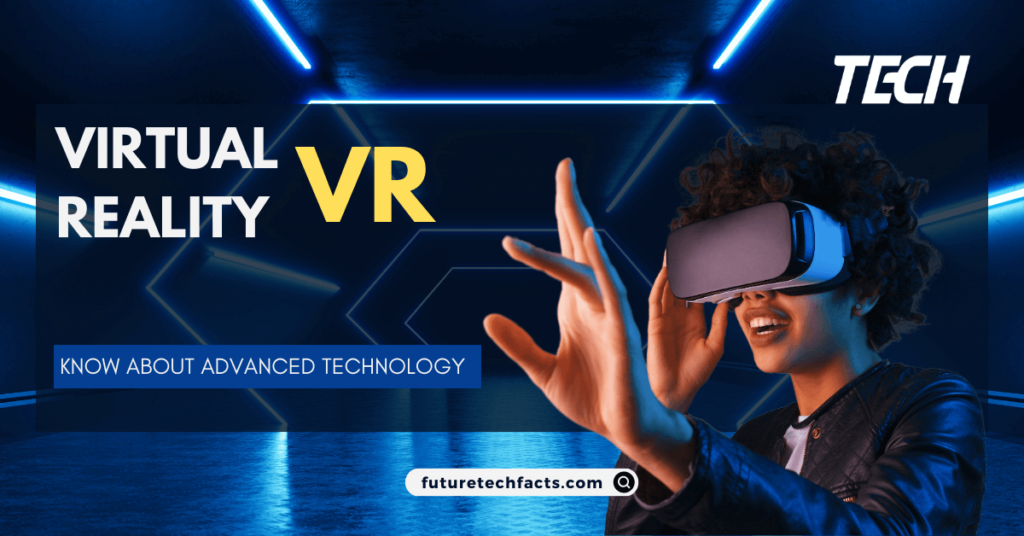
Virtual and Augmented Reality are breaking new ground in the realm of sensory experiences. Smelly VR, a captivating extension, adds olfactory dimensions to virtual environments, enhancing immersion.
1. Smelly VR:
Smelly VR introduces an unprecedented olfactory dimension to virtual experiences, revolutionizing how we perceive and engage with digital content. By incorporating scents into virtual environments, Smelly VR enhances immersion, creating a multisensory encounter that transcends traditional boundaries. This innovative technology has far-reaching implications, from enriching gaming experiences to immersive educational simulations. The olfactory revolution sparked by Smelly VR signifies a bold step towards a more immersive and engaging virtual reality, where the sense of smell becomes an integral part of the digital landscape.
Learn more about VR: Virtual Reality (VR): Know About Advanced Technology
2. Augmented Reality (AR):
Augmented Reality (AR) seamlessly integrates digital information into our physical environment, redefining how we interact with the world. From enhancing retail experiences to transforming education, AR enriches real-world scenarios with overlaid digital content. This technology’s versatility extends to healthcare, gaming, and beyond, creating immersive and interactive user experiences. Augmented Reality’s ability to blur the lines between the virtual and real makes it a transformative force, shaping a future where our everyday encounters are elevated by intelligent digital overlays.
3. Extended Reality (XR):
Extended Reality (XR) transcends traditional realities by combining Augmented Reality (AR), Virtual Reality (VR), and Mixed Reality (MR). XR immerses users in interactive and dynamic experiences, blending the physical and digital realms seamlessly. From training simulations to virtual meetings, XR applications are diverse, enhancing education, gaming, and professional collaborations. As an umbrella term, XR is propelling innovation, pushing the boundaries of human perception, and shaping a future where the lines between the real and virtual worlds are beautifully blurred.
Robotics: The Era of Intelligent Machines
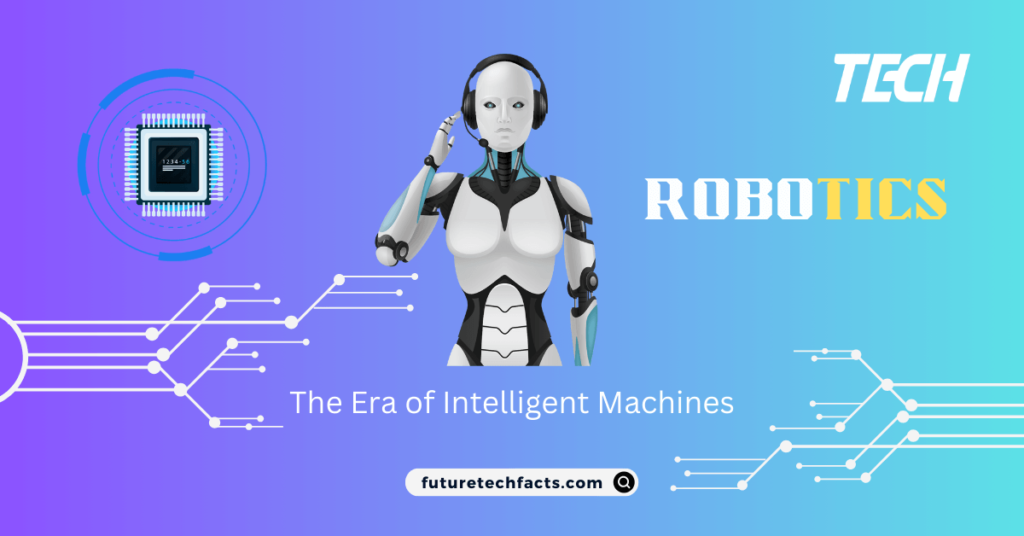
The future of robotics is marked by Brain Reading Robots, Nex Robotics, and Robotic Process Automation (RPA), each contributing to the evolution of intelligent machines.
1. Brain Reading Robots:
In a groundbreaking leap for robotics, Brain Reading Robots are unraveling the mysteries of the mind. This cutting-edge technology translates human thoughts into actionable commands, revolutionizing fields from healthcare to human-machine interfaces. With implications for prosthetics and neurotechnology, these robots hold the key to a future where our thoughts seamlessly interact with machines, fostering a new era of precision, accessibility, and collaboration in robotics and beyond.
2. Nex Robotics:
Nex Robotics stands at the forefront of innovation, driving advancements in autonomous systems. Specializing in robotics solutions, Nex Robotics is transforming industries with its commitment to efficiency and intelligence. From enhancing manufacturing processes to revolutionizing logistics, Nex Robotics pioneers the integration of cutting-edge technologies. With a focus on robotic autonomy, this trailblazing company is charting a course toward a future where intelligent machines redefine the possibilities of automation and robotics in diverse applications.
3. Robotic Process Automation (RPA):
Robotic Process Automation (RPA) is reshaping industries by automating mundane tasks with unparalleled efficiency. This transformative technology utilizes software robots to streamline workflows, reducing operational costs and enhancing productivity. RPA is not merely about automation but signifies a paradigm shift in how organizations approach repetitive processes. From finance to customer service, RPA optimizes tasks, freeing human resources for more strategic endeavors. Embracing RPA heralds a future where businesses operate with unprecedented agility, leveraging the power of intelligent automation for sustained growth and innovation.
Biotechnology and Genetics
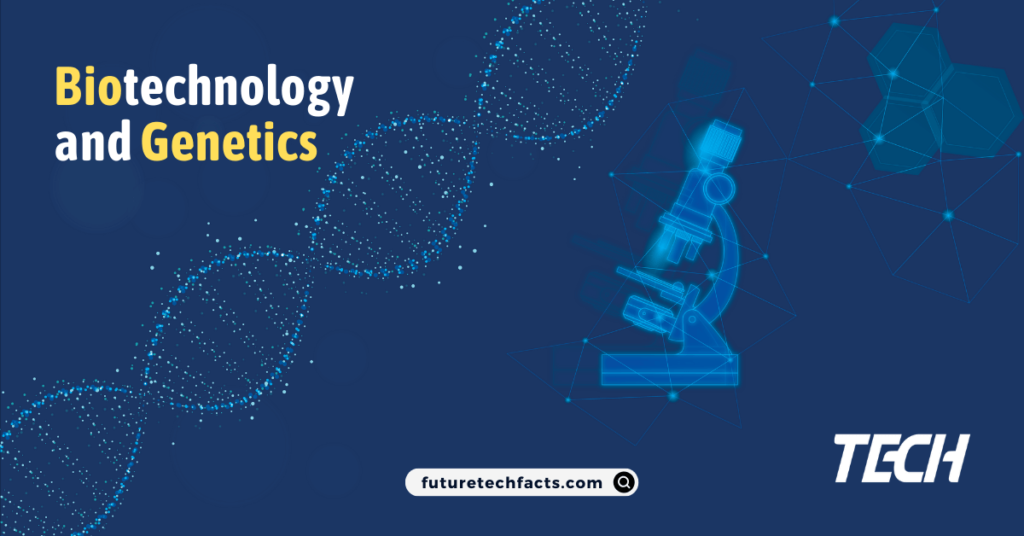
Gene Technology and Genomics are propelling biotechnology into uncharted territories, unraveling the mysteries of our genetic code.
1. Gene Technology:
Gene Technology is spearheading a healthcare revolution by unlocking the potential of personalized medicine. This innovative approach tailors treatments based on individual genetic profiles, marking a paradigm shift in disease management. From targeted therapies to gene editing, Gene Technology holds the promise of groundbreaking advancements, offering precision and efficacy in treating genetic disorders and chronic illnesses. The transformative impact of Gene Technology extends beyond traditional healthcare boundaries, paving the way for a future where medical interventions are tailored to the unique genetic makeup of each individual, fostering a new era of health and well-being.
2. Genomics Future Technology:
Genomics, the study of entire genomes, is rewriting the narrative of human understanding. This groundbreaking field decodes the intricacies of our genetic code, offering profound insights into human evolution, disease susceptibility, and therapeutic possibilities. By unraveling the tapestry of genetic information, genomics empowers researchers, clinicians, and scientists to unlock the secrets within our DNA. From personalized medicine to targeted therapies, genomics is paving the way for a future where our genetic blueprint becomes a powerful tool in shaping individualized approaches to healthcare, ultimately revolutionizing the landscape of medicine and biology.
Space Technology
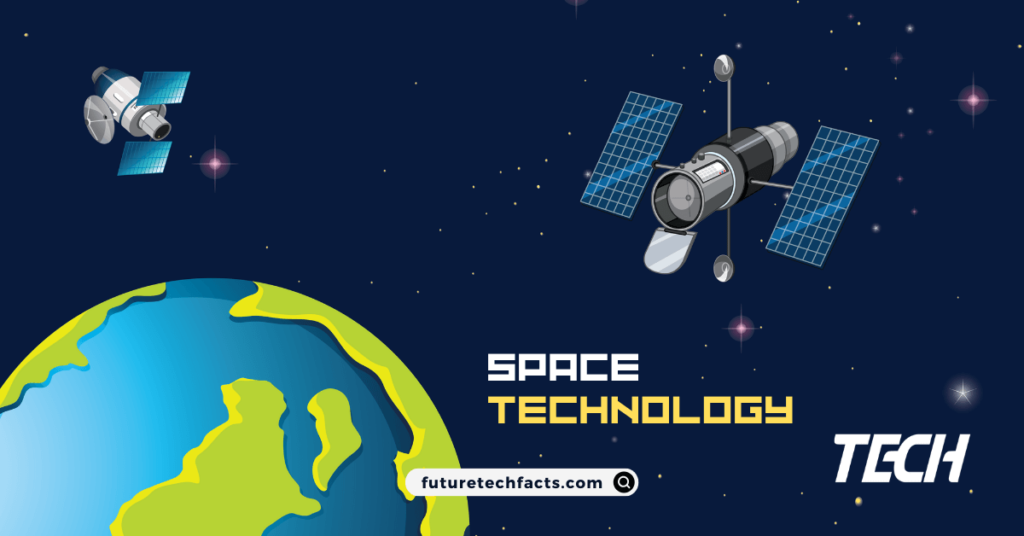
Catapulting satellites into space is a testament to the advancements in Space Technology, showcasing our ability to explore and utilize the cosmos.
1. Catapulting satellites into space:
In a bold leap for space technology, catapulting satellites is redefining the economics of space access. This innovative approach promises cost-effective launches, propelling satellites into orbit with unprecedented efficiency. Catapulting satellites into space signifies a transformative shift, lowering barriers to entry and fostering a new era of space exploration and communication. As we witness this revolution, the skies are no longer the limit, and the future holds a constellation of possibilities where space access becomes more accessible, sustainable, and instrumental in shaping our understanding of the cosmos.
3D Printing Technology

Explore the transformative power of 3D Printing, reshaping industries with precision, sustainability, and boundless innovation.
1. 3D Printing:
3D Printing is revolutionizing manufacturing and design, offering a transformative approach to creating objects layer by layer. This technology spans industries, from healthcare with 3D-printed organs to aerospace components. 3D Printing’s versatility enables intricate designs, rapid prototyping, and sustainable production methods. As it continues to evolve, 3D Printing is reshaping the future, unlocking innovative possibilities and democratizing manufacturing processes globally. This additive manufacturing revolution signifies a paradigm shift, where imagination converges with technology, paving the way for a more customized, sustainable, and accessible future.
Computing Technologies

Computing Power, Edge Computing, and Quantum Computing are driving the digital revolution, unlocking new levels of processing capabilities.
1. Computing Power:
Computing Power, the backbone of the digital age, fuels unprecedented advancements. From handling massive datasets to powering artificial intelligence, the relentless growth in computational capabilities is reshaping industries. This surge in computing power enables innovations in healthcare, finance, and research, propelling us toward a future where technology’s potential is limitless. As we embrace the digital revolution, Computing Power stands as the catalyst for transformative breakthroughs, driving societies into a new era of connectivity, efficiency, and boundless possibilities.
2. Edge Computing:
Edge Computing, a transformative paradigm, brings processing closer to data sources, revolutionizing real-time capabilities. By minimizing latency, Edge Computing enhances efficiency in applications like IoT and AI. This decentralized approach optimizes data processing, making it ideal for industries demanding instant insights. As we navigate a data-driven future, Edge Computing emerges as a pivotal force, propelling us toward seamless, responsive, and intelligent connectivity at the edge of innovation.
3. Quantum Computing:
Quantum Computing marks a seismic shift in technology, harnessing the principles of quantum mechanics for unprecedented computational prowess. Using qubits, it tackles complex problems at speeds unimaginable with classical computers. Quantum Computing holds promise for cryptography, simulations, and AI. As we unlock the quantum realm, the future is poised for a computational renaissance, transcending the limitations of traditional computing and opening avenues for innovation that were once deemed impossible.
Recommended to Read: Computing Technologies
Smart Devices: Smart Gadgets
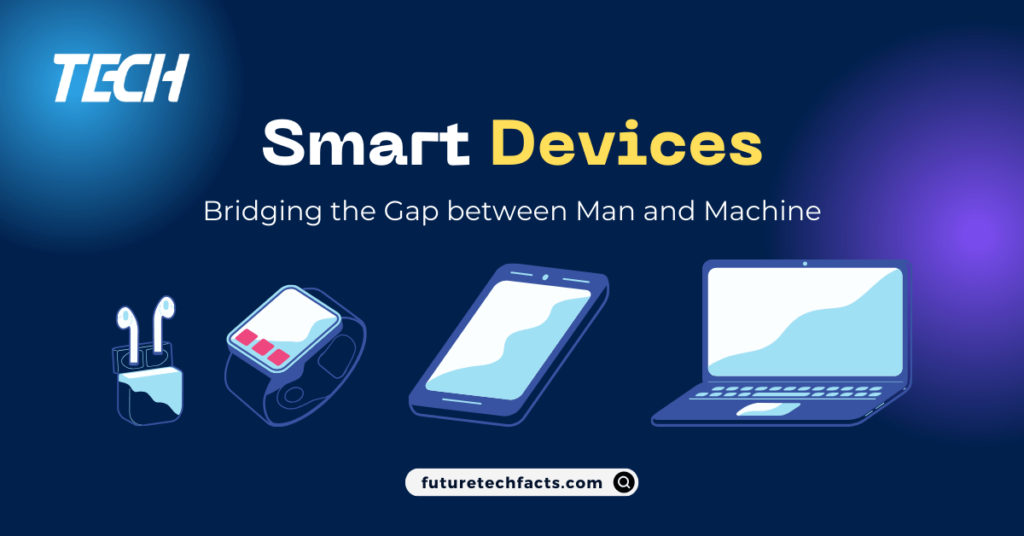
The evolution of Smart Devices is creating a seamless integration of technology into our daily lives.
1. Smarter Devices:
Smarter Devices usher in an era where technology adapts to human needs. These intelligent gadgets, from homes to wearables, use advanced algorithms and AI to learn user preferences, providing a personalized and seamless experience. With the ability to anticipate and respond intelligently, Smarter Devices are not just gadgets; they’re companions that simplify, enhance, and revolutionize the way we live, embodying a future where technology seamlessly integrates into our daily lives for unprecedented convenience and efficiency.
2. Smart Gadgets:
Smart gadgets are those electronic devices that come with a unique technological improvement and provide a free and intelligent experience to the user. These may include smartphones, smart watches, smart home devices, and other strategic devices that can make themselves even more intelligent by using the Internet and wireless technologies. These devices can be used in various fields, such as health, home control, sports, and entertainment.
To know more about smart gadgets: Smart Gadgets For Home And Kitchen
Technology of Data and Security

Datafication, Digital Trust, and Cyber Security play pivotal roles in securing our digital future.
1. Datafication:
Datafication is the process of turning aspects of life into quantifiable data, driving a profound shift in how we understand and navigate the world. From consumer behavior to healthcare trends, datafication empowers industries to extract valuable insights, optimize decision-making, and fuel innovation. This transformative phenomenon is not just about collecting data; it’s about converting the intricacies of our lives into actionable knowledge, paving the way for a data-driven future where information becomes a powerful catalyst for progress and understanding.
2. Digital Trust:
Digital Trust is the bedrock of secure online interactions, ensuring the reliability and integrity of digital platforms. In an era rife with cyber threats, establishing and maintaining trust in digital transactions is paramount. From e-commerce to online communication, Digital Trust fosters a secure environment, underpinning the seamless flow of information. As we navigate the digital landscape, cultivating and preserving Digital Trust becomes pivotal, safeguarding our online experiences and fostering a resilient and secure digital ecosystem.
3. Cyber Security:
Cyber Security is the fortress against digital threats, protecting networks, systems, and data from malicious actors. In an interconnected world, it is paramount to preserve privacy and prevent cyber-attacks. From ransomware to identity theft, cybersecurity fortifies our digital infrastructure, ensuring a resilient defense against evolving threats. As technology advances, the role of cybersecurity becomes increasingly critical, shaping a future where the digital frontier remains secure, fostering trust and reliability in our ever-expanding digital landscape.
The technology of Energy Solutions

New Energy Solutions are paving the way for a more sustainable and environmentally conscious future.
1. New Energy Solutions:
New Energy Solutions are at the forefront of revolutionizing how we generate and consume power. From renewable sources to innovative storage technologies, these solutions redefine the energy landscape. They promise a sustainable future by reducing carbon footprints and fostering energy independence. As we embrace these cutting-edge innovations, New Energy Solutions lead the charge toward a cleaner, more resilient energy ecosystem, shaping a world where environmental consciousness and technological advancements harmoniously propel us into a sustainable tomorrow.
Networking Technologies

Internet of Things (IoT), 5G, and Blockchain are shaping the future of networking technologies, creating a more connected and secure digital environment.
1. Internet of Things (IoT):
The Internet of Things (IoT) interlaces the physical and digital realms, creating an interconnected ecosystem of devices. From smart homes to industrial sensors, IoT enables seamless communication, data exchange, and automation. This transformative technology enhances efficiency, optimizes resource management, and improves daily life. As IoT proliferates, it not only connects devices but transforms how we live and work, heralding a future where the synergy between technology and connectivity orchestrates a more intelligent, responsive, and interconnected world.
2. 5G Technology:
5G, the fifth generation of wireless technology, is catalyzing a paradigm shift in connectivity. With ultra-fast speeds and low latency, 5G revolutionizes communication, unlocking possibilities for smart cities, autonomous vehicles, and augmented reality. This transformative technology not only accelerates data transfer but also propels us into an era where real-time connectivity is the norm. As 5G expands, it forms the backbone of a hyperconnected future, where innovation, efficiency, and immersive experiences seamlessly converge.
Blockchain Technology
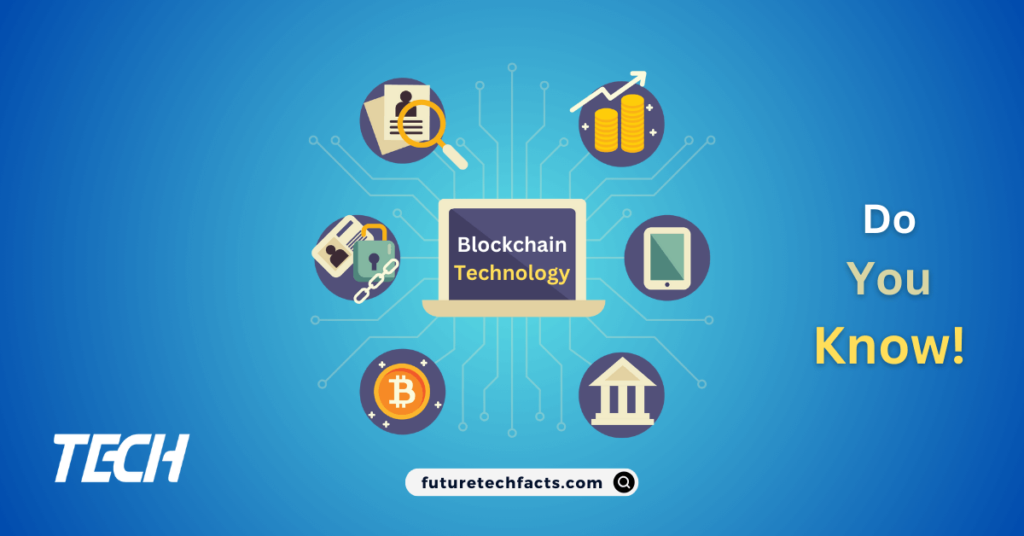
Explore the revolutionary impact of Blockchain technology, redefining trust and transparency across various sectors. From financial transactions to supply chains, witness the power of decentralized ledgers shaping a more secure, efficient, and trustworthy future.
1. Blockchain:
Blockchain, a decentralized ledger technology, is reshaping industries by providing secure, transparent, and tamper-proof record-keeping. Beyond cryptocurrencies, it ensures trust in transactions, supply chains, and data management. As a distributed and incorruptible system, Blockchain fosters a future where trust is inherent, eliminating intermediaries and ushering in a new era of transparency, efficiency, and integrity across diverse sectors.
Conclusion:
As we navigate the ever-evolving landscape of future technology, it is evident that innovation knows no bounds. The convergence of Artificial Intelligence, Robotics, Biotechnology, Space Technology, 3D Printing, Computing Technologies, Smart Devices, Data and Security, Energy Solutions, and Networking Technologies is creating a tapestry of advancements that will redefine the way we live and interact.
For North America, Europe, and Asia – the epicenters of technological evolution – the future holds promise and challenges alike. By staying at the forefront of these technological trends, societies can harness the power of innovation for a better and more sustainable tomorrow.
FAQ:
Q1: What is the main focus of the article?
The article delves into various facets of future technology, exploring innovations in Artificial Intelligence, Robotics, Biotechnology, Space Technology, 3D Printing, Computing Technologies, Smart Devices, Data and Security, Energy Solutions, Networking Technologies, and Blockchain.
Q2: How does Generative-AI contribute to the future?
Generative AI, a subset of Artificial Intelligence, is explored in detail. It revolutionizes content creation by allowing machines to generate realistic content autonomously, ushering in a new era of creativity and innovation.
Q3: What is the significance of Smelly VR in Virtual and Augmented Reality?
Smelly VR introduces olfactory dimensions to virtual environments, enhancing immersion. The FAQ elaborates on how this innovation impacts gaming, education, and therapeutic applications within Virtual and Augmented Reality.
Q4: How is Gene Technology changing healthcare?
Gene Technology, detailed in the article, is revolutionizing healthcare through personalized medicine. It explores how this technology is reshaping treatments based on individual genetic profiles and its implications for genetic disorders and chronic diseases.
Q5: What are the key advancements in Space Technology covered?
The article discusses the innovative approach of catapulting satellites into space, exploring how it is revolutionizing space access and redefining the economics of satellite deployment.
Q6: How does 3D Printing contribute to the future of manufacturing?
3D Printing is highlighted as a transformative technology impacting manufacturing and healthcare. The FAQ expands on its versatility, applications, and role in shaping a more customized, sustainable future.
Q7: What role does Quantum Computing play in the digital revolution?
Quantum Computing’s significance in redefining processing speeds is explained. The FAQ outlines its applications in cryptography, simulations, and optimization problems, paving the way for unparalleled advancements in the digital landscape.
Q8: How are Smart Devices evolving into Smarter Devices?
The article touches on the evolution of Smarter Devices, elaborating on how they adapt to user preferences, learn, and enhance user experiences. The FAQ provides insights into how these devices are becoming integral to a more connected and intelligent world.
Q9: How do Datafication and Digital Trust impact the digital realm?
The article discusses Datafication and Digital Trust. The FAQ further explores how datafication influences decision-making and how digital trust is crucial in an era of data breaches and cyber threats.
Q10: How are New Energy Solutions contributing to sustainability?
New Energy Solutions are highlighted for reshaping the energy landscape. The FAQ expands on their role in reducing carbon footprints, fostering energy independence, and contributing to a more sustainable and environmentally conscious future.
